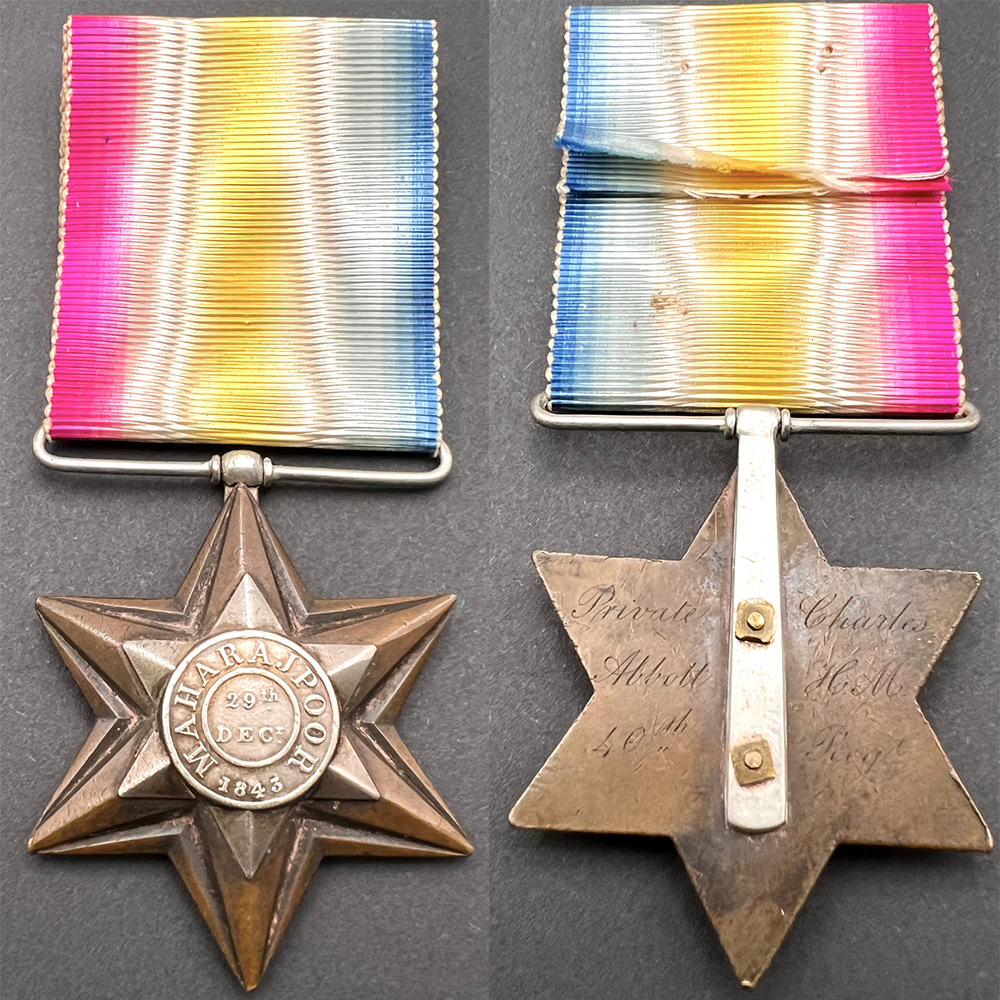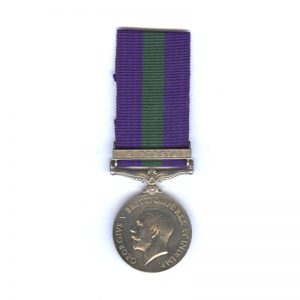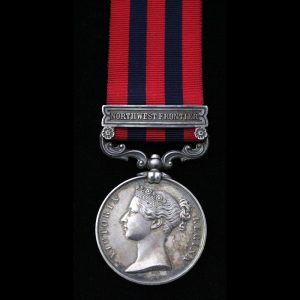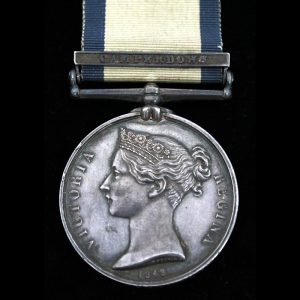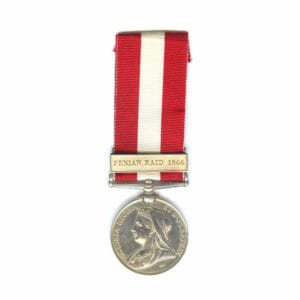Description
Maharajpoor Star, 29th Dec 1843, Private Charles Abbott, 40th Regiment of Foot, confirmed on service records, also fought through Afghanistan War.
Officially engraved in running script on reverse: “Private Charles Abbott H.M. 40th Regt.”
Fitted with a good quality silver bar and silver hinged ribbon suspension.
Charles Abbott, was born in Sittingbourne, Kent circa 1817.
He first attested for service with the 40th Foot at Rochester, Kent on 4th October 1837.
He would go on to serve for 14 years and 4 days, spending 6 years and 7 months on service overseas:
“In Scinde, Beloochistan and Afghanistan, 3 years 10 months.
In East Indies, 2 years 9 months.”
“His conduct has been very good. He is in possession of two good conduct badges.
He has been tried by a detachment court martial and committed for not turning up upon deck when ordered while on board ship.
Grant a medal inscribed Candahar, Ghuznee, Cabool, 1842, for the 2nd Afghan Campaign.
Granted a Bronze Star for the Battle of Maharajpoor, 29th December 1843.”
Upon his discharge after 14 years on 8th October 1851, he was 34 years old, 5 Foot 10 Inches tall, with dark brown hair, brown eyes and a sallow complexion.
His body markings were noted as having “Traces of Corporal Punishment”.
Intended to settle on discharge in Leeds, Yorkshire.
This man saw significant action in India and Afghanistan during his service period.
First the “Fighting Fortieth” as they were known, fought though the First Anglo Afghan War, and as noted on his Papers received the rare triple action medal for “Candahar” “Ghuznee” and “Cabul”
During the War, the regiment had arrived in the “Sindh” during January 1839 to fight in the capture of Karachi. They arrived at Kandahar in October 1841 and then they fought with General William Nott’s “Avenging Army” in the Capture of Kabul during 1842.
40TH AT MAHARAJPORE
At the battle of Maharajpore, the Maratha Army had a large force of 14 Battalions, 1000 Artillerymen with 60 Guns, 6000 Cavalry.
Quin with the 40th Foot was present alongside the 2nd and 16th Native Infantry forming the Central Column.
The Central column advanced to attack where they believed the main enemy force to be located.
However, during the night the Marathas had moved and the British were surprised as they came under heavy fire from the Maratha Artillery in their new positions.
The central column then received the order to take the battery positions, which they did under continuous heavy fire from shot, grape, canister and chain.
Getting up close the British engaged the Marathas in Hand to Hand Fighting, both sides taking heavy casualties, they managed to clear the Maratha positions.
Few Marathas managed to escape, most chose to fight to the death, total losses for them numbered between 3000-4000 men. The cost for the defeat of the Marathas was 797 men killed, wounded or missing to the British.
